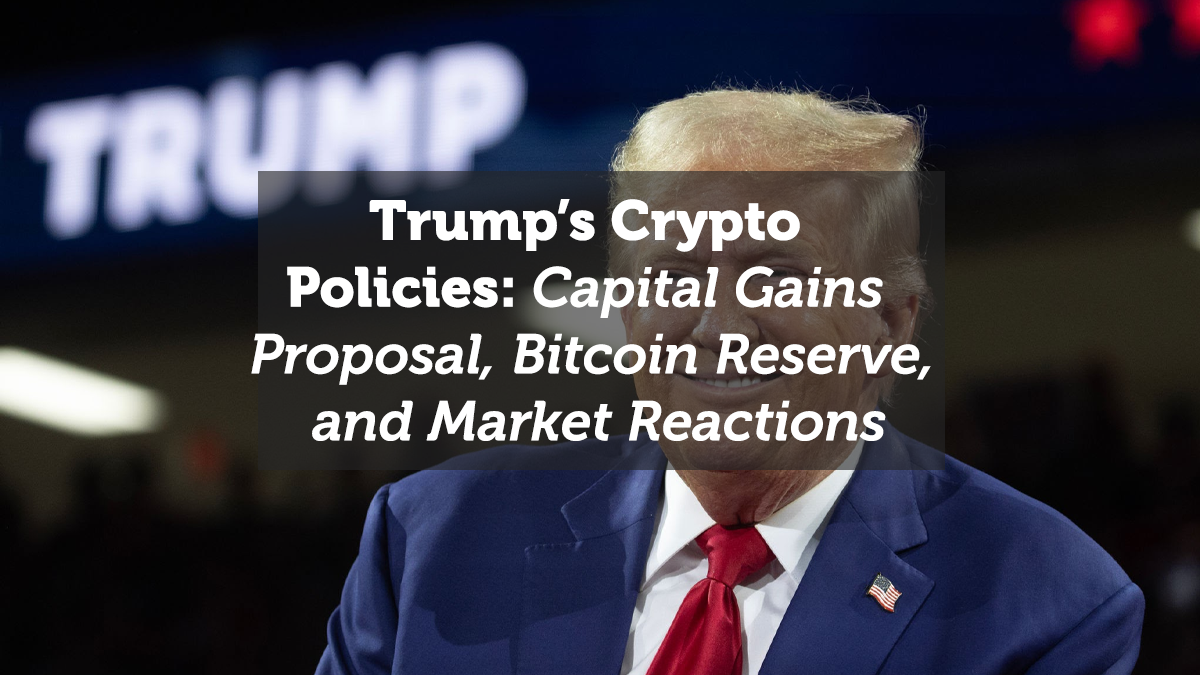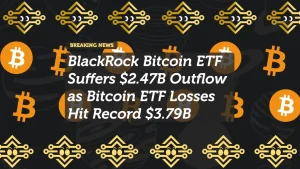
Trump’s Crypto Policies: Capital Gains Proposal, Bitcoin Reserve, and Market Reactions
President Donald Trump’s return to office has reignited discussions about cryptocurrency policy in the United States. During his campaign, Trump promised to position the U.S. as the “crypto capital of the planet”, sparking both excitement and apprehension in the market. While no executive orders have been issued yet, his administration has floated several proposals that could significantly reshape the crypto landscape.
Proposed Policies: The Blueprint for U.S. Crypto Leadership
1. Elimination of Capital Gains Taxes on U.S. Cryptocurrencies
One of the most ambitious ideas is removing capital gains taxes for cryptocurrencies issued by U.S.-registered companies.
- Goal: Encourage domestic crypto innovation and investment while reducing incentives to move operations offshore.
- Market Impact: Lower tax burdens could attract institutional investors and retail traders, boosting liquidity and adoption for U.S.-based projects.
- Concerns: Critics fear this policy could lead to market consolidation, favoring established projects while marginalizing smaller or international competitors.
2. Creation of a Strategic Bitcoin Reserve
Trump proposed the establishment of a U.S. Strategic Bitcoin Reserve, modeled after the Strategic Petroleum Reserve, to hold seized Bitcoin and potentially other cryptocurrencies.
- Purpose:
- Stabilize crypto markets during volatile periods.
- Use Bitcoin as a national asset to hedge against inflation and economic downturns.
- Implications:
- This could elevate Bitcoin’s status as a “digital gold” and solidify its role in national financial strategies.
- Critics warn that government-controlled crypto reserves might conflict with Bitcoin’s decentralized ethos.
3. Crypto-Friendly Leadership at the SEC
With Paul Atkins nominated as SEC Chair, the crypto community expects a shift toward clearer, more favorable regulations.
- Focus Areas:
- Revisiting cases against major crypto firms like Ripple and Coinbase.
- Establishing frameworks for crypto ETFs, including assets like Solana (SOL) and XRP, alongside Bitcoin and Ethereum.
- Market Sentiment: Optimism around Atkins’ leadership has already bolstered crypto prices, with Bitcoin recently surpassing $100,000.
4. Advisory Council for Crypto Regulation
Trump has proposed forming a Bitcoin and Crypto Presidential Advisory Council, comprising industry experts to craft fair and transparent policies.
- Objective: Collaborate with industry leaders to address regulatory uncertainty while fostering innovation.
- Challenges: Aligning diverse industry perspectives with broader regulatory goals may prove complex.
Concerns from the Crypto Community
Market Consolidation Risks
The elimination of capital gains taxes for U.S.-born cryptocurrencies could unintentionally favor established projects, creating barriers for newer or international ventures.
- Resulting Risks:
- Overvaluation of a select few cryptocurrencies.
- Reduced diversity and innovation within the global crypto market.
Uncertainty Around Implementation
While Trump’s promises have stirred enthusiasm, the lack of formal executive orders or legislative action has left the market in a state of anticipation.
- Legislative Hurdles: Enacting sweeping changes like tax cuts might require Congressional approval, delaying implementation.
- Market Volatility: The ambiguity has contributed to price swings, particularly in Bitcoin and Ethereum.
Market Reactions: Optimism Amid Volatility
Despite these concerns, the market has responded positively to Trump’s rhetoric:
- Bitcoin Performance: Surged past $109,000, partly fueled by optimism about potential tax reforms and regulatory clarity.
- Altcoin Activity: Increased interest in U.S.-based projects like Solana (SOL) and Avalanche (AVAX), as traders speculate on which assets could benefit most from these policies.
Global Implications: Will Other Nations Follow Suit?
Increased Competition for Crypto Leadership
If Trump’s policies succeed, they could:
- Attract Global Talent: Crypto firms from countries with stricter regulations may relocate to the U.S.
- Prompt International Responses: Other nations might revise their crypto policies to remain competitive.
Potential Risks to Global Diversity
However, an overly U.S.-centric approach could discourage innovation in less favorable jurisdictions, consolidating market power in a few key regions.
Looking Ahead: What to Watch For
1. Executive Orders
Keep an eye on potential executive actions in Trump’s first 100 days, particularly regarding tax cuts and advisory council formation.
2. Congressional Developments
Legislative proposals, such as the Bitcoin Act of 2024, could gain momentum under the new administration.
3. Market Trends
How U.S.-based crypto assets perform in comparison to international projects will offer insights into the real impact of these policies.
Conclusion: A Defining Moment for U.S. Crypto
President Trump’s proposed policies could mark a turning point for cryptocurrency in the U.S., potentially positioning the country as a global leader in the digital economy. However, the success of these initiatives will depend on their implementation, transparency, and inclusivity.
For investors and developers, the message is clear: Stay informed, as the next few months could redefine the trajectory of crypto regulation and innovation.
















